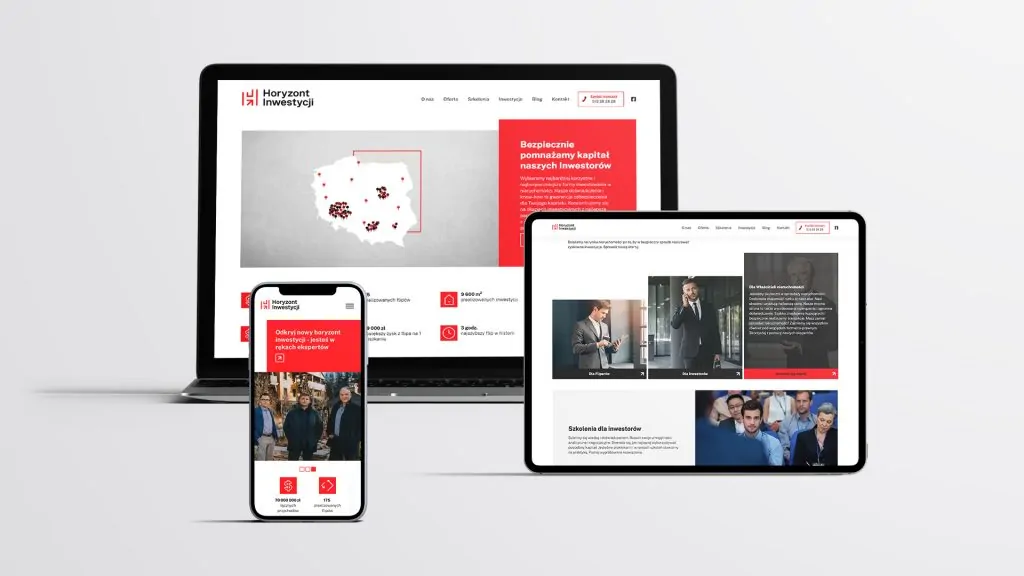A company's reputation is one of its most valuable assets. External PR plays an important role in shaping this reputation, directly influencing the perception of the brand by customers, business partners and the public. Effective external PR activities can significantly strengthen a company's position in the market, building trust and loyalty among its audience.
What is external PR?
External PR comprises all communication activities aimed at the company's environment. Its main objective is to create a positive image of the organisation among different stakeholder groups, such as customers, potential customers, investors, the media or local communities. Unlike internal PR, which focuses on communication with employees, external PR focuses on building relationships with external stakeholders. These activities are aimed at promoting products or services, but above all at creating a consistent image of the company as a responsible and trustworthy business partner.
External PR uses a variety of communication channels, including traditional media, digital platforms or public events. Strategic planning and consistent implementation of communication activities that support the organisation's business objectives are of great importance here. An example of effective external PR would be a company's campaign Patagonia 'Don't Buy This Jacket'. Instead of encouraging people to buy, the brand drew attention to the problem of over-consumption and its impact on the environment. This unconventional strategy reinforced Patagonia's image as a socially responsible company and, interestingly, increased sales and customer loyalty.

Why invest in external PR?
External PR helps build long-lasting relationships with stakeholders that translate into business stability and resilience to potential image crises. Effective external PR also contributes to increasing brand recognition and building brand authority in the industry. Through strategic communications management, companies can position themselves as market leaders and experts in their field. External PR also helps to build brand trust. Companies that are able to effectively communicate their values and activities gain competitive advantage and customer loyalty.
It is worth noting that external PR plays an important role in crisis management. Companies that have invested in building positive relationships with the media and stakeholders are better prepared to deal with potential crisis situations. Prompt and transparent communication during a crisis can significantly minimise the negative effects on a company's reputation.
Business success does not happen by chance.
We can help you at every stage of the company's operation on the market!
Key elements of an external PR strategy
- The foundation of this strategy is transparency in communication with the environment. Companies that openly share information about their activities, successes, but also challenges, build trust among stakeholders.
- Another important element is authenticity of the message. Brands need to be consistent in their statements and actions. An example would be a company Ben & Jerry'swhich consistently engages with important social issues, thereby reinforcing its image as a responsible and committed brand.
- Supporting social and environmental activities is now an integral part of the external PR strategy of many companies. An example is the company's 'Sharing Beauty with All' programme. L'Oréalwhich involves reducing environmental impact while increasing positive social impact.
- Building long-term relationships with stakeholders requires a systematic approach and consistency in action. Companies should regularly engage in dialogue with different audiences, using a variety of communication channels. The ability to listen and respond to stakeholder needs and expectations is important here.
- The external PR strategy should also take into account storytelling element. Telling the story of a brand, its employees or its customers allows to emotionally engage audiences and build deeper relationships. An example of the effective use of storytelling in PR is the company's 'Share a Coke' campaign Coca-Cola, which, by personalising the product, has created a personal connection with consumers.
External PR tools
External PR has a wide range of tools at its disposal to effectively reach different audiences. Of great importance are media relations, which allow a company to build a positive image through publications in the press, radio or television. Preparing press releases, organising press conferences or giving interviews are the basic activities in this area. Industry events and conferences are another important external PR tool. They enable direct contact with customers, business partners and industry experts. An example is the annual F8 conference organised by Facebookwhich showcases the company's new solutions, but also builds its image as an innovation leader in the area of social technology.
social media play an increasingly important role in external PR strategies. LinkedIn, Twitter if Instagram enable companies to communicate directly with their audiences, build a community around the brand and respond quickly to emerging trends or crisis situations. An example of the effective use of social media in PR is the brand Wendy's, whose distinctive, humorous tone of communication on Twitter has contributed to a significant increase in recognition and liking among younger consumers.

Corporate gifts and souvenirs continue to play an important role in building brand image. The quality and usability of the products on offer are important here. Companies are increasingly relying on green and innovative solutions that promote the brand but also reflect its values. An example is the company Patagoniawhich offers its customers clothing repair kits instead of traditional gadgets, underlining its commitment to sustainability.
Content marketing is another important external PR tool. Creating valuable content, e.g. expert articles, e-books or webinars, allows companies to establish themselves as experts in the industry. An example of the effective use of content marketing in PR is the company's HubSpot, who has built a strong position in the field of online marketing through her blog and numerous educational publications.
Best practices and trends in external PR
Companies are increasingly combining traditional PR techniques with online marketing tools to create coherent communication strategies involving traditional and digital media. An example of a successful campaign combining PR and digital marketing is ALS Ice Bucket Challenge" campaign. Started as a local initiative, the campaign, through the use of social media and celebrity involvement, has become a global phenomenon, significantly raising awareness of amyotrophic lateral sclerosis (ALS) and helping to raise millions of dollars for research into the disease.
Another important trend in external PR is the growing emphasis on environmental and social activities. Companies are increasingly involved in initiatives related to sustainability, social equality or environmental protection. Examples include Unilever's 'Purpose 2030' campaignemissions and improving the living conditions of millions of people. Such activities build a positive brand image and, at the same time, respond to growing consumer expectations of corporate social responsibility.

Personalisation of communication is another important trend in external PR. Companies are trying to adapt their messages to the individual needs and preferences of their audiences. The use of big data and artificial intelligence makes it possible to create personalised messages that reach specific target groups. Examples include Spotify Wrapped" campaign, which presents users with a personalised summary of their music activity, while building a positive brand image as innovative and customer-focused.
Video content is becoming increasingly important in external PR strategies. Companies are using platforms such as YouTube if TikTok to create engaging video content that allows for more emotional and direct outreach. An example of the effective use of video in PR can be Blendtec's "Will It Blend?" series, which, through humorous videos demonstrating the power of its blenders, has gained huge popularity on the internet and significantly increased brand recognition.
External PR plays an important role in shaping a company's image and building its position in the market. Successful external PR strategies require creativity and innovation, but above all authenticity and consistency with brand values. Companies that are able to skilfully use the available tools gain a competitive advantage and build lasting relationships with stakeholders.
Worth knowing:
What is external PR?
There are many definitions and theories that define what external PR is. In short, it can be said that it is a process of conducting activities aimed at building and maintaining a positive image of a company or organization outside. It is a complex process that requires not only communication with a wide audience, but also building positive relationships with important stakeholders such as journalists, social activists and other opinion leaders. In today's world, where the image of an organization is crucial for success, external PR is an inseparable element of every company's activity.
How to do external PR?
External PR is one of the most important elements of any marketing strategy. It is worth noting that it requires a comprehensive approach, taking into account both traditional media and those related to new technologies. It is also important to define the target group and objectives of activities related to external PR. Cooperation with a PR agency or a specialist in this field is a real solution to running an effective campaign and building a positive image of the company. To sum up, external PR is quite a challenge, but with the right approach and tools, it will certainly bring great results.

